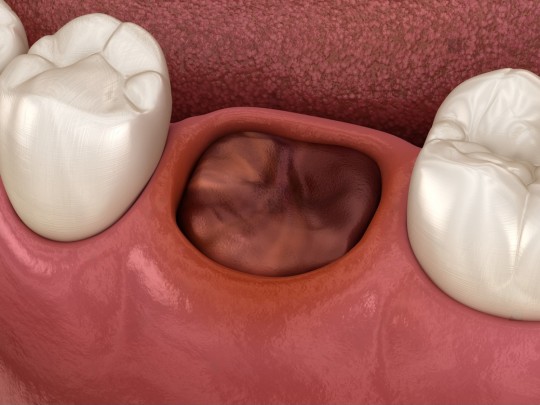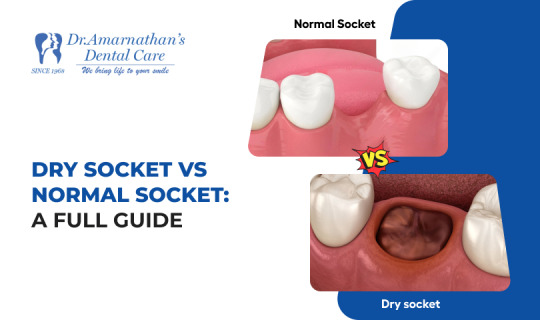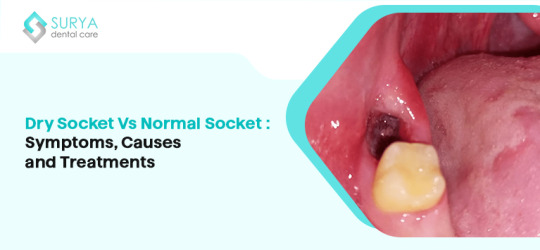#dry socket
Explore tagged Tumblr posts
Text

Can’t remember the last time I got properly dressed in not my hoodie and flares. Also heading into 5 days of being on just liquids and fuck man I’m so HUNGRY
21 notes
·
View notes
Text
Throwback to that time we had a tooth extracted and we cried because we couldn't have a milkshake because of the risk of drysocket
jdjdjdkdk also we have a tooth (assumedly a wisdom tooth?) growing into the spot where we had the tooth extracted and it's so uncomfortable
3 notes
·
View notes
Text
Alveogyl tastes like straight pumpkin pie spice in your mouth, and paint thinner. And they NEED to tell you that scrubbing your tongue and hard palate with sensitive gum toothpaste a couple times is what it takes to get that taste off your tongue enough to not want to puke. Cause I was resigned to not eat until the binding agent came out in three days cause of how putrid it is, but nope a scratchy brush and a couple rounds of sensitive paste did me good. Just maybe stay away from greasy food regardless cause yuck
2 notes
·
View notes
Text
#Abomination#Dry Socket#body socket split#sorry if this is a repost i cant find anything in the sea of poetry and fanfiction#help everything is slightly annoying#Bandcamp
0 notes
Text
Dry Socket vs. Normal Socket: Key Differences, Causes, and Treatments
By Dr. Nasar Abdul Wadood, Chief Doctor, Align Dental Care

Tooth extractions are common, but the recovery process can vary depending on whether a normal socket or a dry socket forms. A normal socket occurs when a blood clot develops in the empty tooth cavity, protecting the bone and nerves while promoting healing. On the other hand, a dry socket happens when this clot is dislodged or fails to form, exposing the underlying bone and causing intense pain. This blog covers the distinctions between normal sockets and dry sockets, their symptoms, causes, treatment options, and how to prevent complications.
What Is a Normal Socket?
A normal socket forms after tooth extraction, characterized by a protective blood clot in the cavity. This clot acts as a shield for the bone and nerves, preventing infection and aiding tissue regeneration. Recovery is typically smooth, with mild discomfort and swelling that subside over a few weeks as the tissue heals.
Healing Process of a Normal Socket
Blood Clot Formation: Immediately after extraction, a clot forms to protect the area.
Tissue Regeneration: Over the first week, gum tissue starts closing the socket.
Bone Healing: Bone begins to fill the cavity within a month, completing the process over a few months.
Symptoms of a Normal Socket
Mild, manageable pain
Slight swelling and soreness
Minimal bleeding that stops within hours
Gradual closure of the cavity
Care Tips for a Normal Socket
Rinse gently with warm salt water to prevent infection.
Avoid using straws or vigorous spitting to protect the blood clot.
Eat soft foods and stay hydrated.
Maintain oral hygiene while avoiding the extraction site during brushing.
What Is a Dry Socket?
A dry socket, or alveolar osteitis, is a painful condition occurring when the protective blood clot is dislodged or dissolves too early, leaving the bone exposed. This can delay healing and result in intense pain, often radiating to the ear or jaw.
Symptoms of a Dry Socket
Severe pain starting 2-4 days after extraction
Visible empty socket with exposed bone
Foul odor and unpleasant taste in the mouth
Swelling and delayed healing
Causes of a Dry Socket
Dislodged or absent blood clot
Smoking or tobacco use
Poor oral hygiene
Vigorous spitting or rinsing
Hormonal changes
Complicated extractions, such as impacted wisdom teeth
How to Treat a Dry Socket
Professional Cleaning: Dentists flush the socket to remove debris.
Medicated Dressing: Applied to ease pain and promote healing.
Pain Management: Prescribed medications help alleviate discomfort.
Warm Saltwater Rinses: Reduces bacteria and promotes healing.
Prevention Tips for Dry Socket
Avoid smoking or tobacco products for at least 72 hours post-extraction.
Refrain from using straws or creating suction near the extraction site.
Maintain good oral hygiene but avoid disturbing the healing area.
Stick to soft foods and avoid hard or crunchy items.
Follow your dentist’s instructions for post-operative care.
Normal Socket vs. Dry Socket: Key Differences
Feature
Normal Socket
Dry Socket
Definition
Healing cavity with a blood clot
Cavity with a dislodged or absent blood clot
Pain
Mild to moderate, subsides with time
Severe, sharp pain starting 2-4 days after extraction
Healing Process
Stable blood clot supports gradual recovery
Exposed bone delays healing
Swelling
Mild and temporary
Increased and persistent
Odor
No significant odor
Foul smell due to exposed tissue
Taste
Normal taste
Bad taste in the mouth
Conclusion
Proper care after tooth extraction is essential to avoid complications like dry sockets. While a normal socket heals with minimal discomfort, dry sockets require immediate attention due to severe pain and delayed healing. By understanding the differences and following your dentist’s care instructions, you can ensure a smooth recovery. If you suspect a dry socket, consult your dentist promptly for treatment.
With the right care and attention, you can minimize the risks and heal effectively after a tooth extraction.
To know more in detail with images, visit our site: https://www.aligndentalcare.lk/dry-socket-vs-normal-socket/
0 notes
Text

Dry socket is a painful dental condition that occurs after wisdom tooth extraction due to dislodge of blood clot. It should be treated asap. For More Info Visit: https://www.suryadentalcare.com/dry-socket-vs-normal-socket-symptoms-causes-and-treatments/
0 notes
Text
Dry socket vs Normal socket: A Full Guide
Dental treatments, particularly tooth extractions, are complex and difficult procedures that typically result in a variety of complications. Among these, "dry socket" is a major concern for both patients and dentists. While most individuals heal quickly after an extraction, some may develop this uncomfortable condition, which arises when a blood clot fails to form or becomes dislodged from the extraction site, exposing underlying nerves and bone. Understanding the distinction between a dry socket and a normal socket not only aids in detecting potential problems early on, but also promotes better post-operative care.
In this blog, we will discuss the differences between normal and dry sockets, as well as the symptoms, treatment, and prevention methods.
What is a Dry Socket?
Dry socket, also known as alveolar osteitis, occurs when a blood clot in the socket dissolves or does not develop. This exposes the bone and nerves, resulting in extreme pain and problems. Here’s what you should know.

Treatment for Dry Socket:
Professional Care
Pain Management
Home Care
Prevention of Dry Socket:
Follow post-extraction instructions
Avoid smoking
Maintain oral hygiene
What is a Normal Socket?
After a tooth extraction, the empty space is known as a socket. A normal socket is the typical healing process in which the extraction site recovers as expected. Here's a closer look:
Blood Clot Formation
Healing Process
Recovery Time

Treatment for a Normal Socket
Pain Management
Home Care
Avoid Irritants
Prevention for a Normal Socket
Follow the post-extraction instructions
Maintain oral hygiene
Avoid smoking
Comparison: Dry Socket vs Normal Socket
Pain Level:
Normal socket: Mild to moderate pain, manageable with over-the-counter drugs.
Dry socket: Severe, chronic pain requiring stronger pain management and frequent dental visits.
Appearance:
Normal socket: Blood clot covers the wound, indicating proper healing.
Dry socket: Absence or dislodgement of the clot, exposing the bone, often with irritation or infection.
Healing Process:
Normal socket: Predictable healing with a protective blood clot facilitating recovery.
Dry socket: Delayed healing due to disruption of the clot, leading to a longer recovery period.
Risk Factors:
Normal socket: Typically heals without issues.
Dry socket: Increased risk with smoking, poor aftercare, and hormonal factors; adherence to care guidelines is crucial.
Conclusion:
Understanding the difference between dry sockets and regular sockets is essential for a healthy recovery from tooth extraction. While a normal socket heals with few issues, a dry socket necessitates rapid attention and specialized treatment. Following basic care instructions and adopting good oral hygiene will help reduce the likelihood of complications and assure a faster recovery.
To know more details read the full blog here : https://www.dramarnathansdentalcare.com/dry-socket-vs-normal-socket/

#dry socket#dry socket on tooth#dry socket pain#dry socket symptoms#dry socket tooth#dry socket treatment#dry socket versus normal#dry socket vs normal socket#healing normal socket after tooth extraction#healthy socket after extraction#how do you treat dry socket#how to treat dry socket#normal socket#normal socket after tooth extraction#normal socket vs dry socket#what is dry socket
0 notes
Text
Do You Know What Dry Socket Is?
Informational post about something a lot of people might be unaware of.
So, let’s say you loose a tooth. You fell and knock it out, maybe you pulled it at home for whatever reason. All that is important in this scenario is that you’ve lost a tooth outside of a dentist visit, so there is no field professional there to walk you through the healing process.
Now, how do you recover from this? Saltwater rinse, wad of cotton to help slow the bleeding, painkillers, eating soft foods. It stands to reason that, like any other recovery period that involves the mouth and teeth, you’d also need a straw. Makes sense, easier to get liquid into your mouth and you’ll have more control over where in your mouth it goes. Makes sense, right?
You are about to give yourself dry socket.
The main difference between most other well known recovery periods from a jaw / mouth injury, is that the act of sucking on a straw can dislodge the blood clot from your gums.
The reason is, for a few days, your blood clot is actually smaller than the hole left behind by the missing tooth. Gums do heal quicker than most other tissue on your body , so the opening will close to be smaller than the blood clot itself. But there is a period of time, the first few days of healing, that the blood clot is at a serious risk of coming loose or being dissolved away . This risk does not truly go away until healing is over , but the likelyhood slowly goes down.
This blood clot being removed will reveal the traumatized and damaged nerve + the jaw bone to the open . Unsurprisingly, this is extraordinary pain, that nothing can soothe. Any fluid gets into the wound ? Food particles ? You inhale / exhale too hard ? That nerve is going to Ache. Not to mention , you’ re at an even higher infection risk now .
And the things that can cause dry socket are so innocuous , that unless you know about the possibility , you may do these actions without thinking.
1) Straws ( and Sucking )
The pressure from drinking through a straw is enough to pull the blood clot from your gums . This pressure can be caused by anything that requires sucking , this includes smoking as well . Anything that requires a strong pull into your mouth to eat / ingest is exerting the same pull on your loose blood clot . If you suck on a straw now , you can feel the kind of pressure vacuum you make in your mouth . That pressure does not care about what it might cause to dislodge .
2) Spitting Out Blood
At least , for the first 24 hours . After 24 hours ( specifically , after your gums stop consistently bleeding ) and you start doing saltwater rinses , you’ re free to spit . But regardless , forceful spitting can do the exact same damage as drinking from a straw . It’ s the pressure and force you cause . When you do saltwater rinses , don’ t really swish. Tilt your head side to side and slowly push the water around . For the first 24 hours , you are encouraged to swallow blood instead of spitting , to avoid the risk of spitting out the start of a blood clot and prolonging the bleeding cycle . Keep in mind the nausea this can cause .
3) Alcohol and Hot Food/Liquid
Paring these together since they cause similar issues . Alcohol can melt a blood clot , and abundance of heat can increase blood flow too the clot . Both of these will cause the clot to dissolve or come loose , but cold food/drink is more recommended . Yes , cold can cause an ache if it manages to come into direct contact with the healing area , but it will not affect the blood clot as seriously as hot food/drink will . Room temperature is also okay for consumption.
4) Exercise
Light exercise is okay , but anything that ups your heart-rate is upping blood flow to your wound . Nothing strenuous, nothing that pushes endurance , nothing that you know will exhaust you . Even if you heart-rate jumps from something like chasing a cat down because they have something they shouldn’ t have can cause increased blood flow ( trust me , it felt like I was undergoing divine punishment because I stopped my cat from eating a tuff of dog hair . ) The sudden taste of blood is a warning to slow down what you’re doing .
While dry socket can heal on it’s own, the gums will cover the exposed bone regardless of if there’s a clot there or not, this pain is not something anyone deserves to struggle with . Once again , dealing with dry socket is dealing exposed bone and nerve .
Dentists are expensive , and if you cannot afford a dental visit after the loss of a tooth, I only want you to be aware of one of the more serious complications that come with such a thing happening . Everyone deserves to heal in comfort , and I only want people to have the best chance at having a complication free healing process .
#long post#info#thankfully I’ ve managed to not get dry socket#my father has had dry socket after the first time he had a tooth removed#he could not describe the pain besides it being one of the worst he’s ever felt .#the only way to fix this once you get it is to force a new blood clot#causing more damage to the gums and forcing a new blood clot to form#prolonging the healing process further
368 notes
·
View notes
Text

So, after the last few months of absolute shit going on with my health, I’ve had yet another set back. Had a wisdom tooth extracted on Monday and ended up getting a dry socket which has made my face swell up so badly on one side and the pain is some of the worst I’ve ever experienced. Been laid up since Monday. Hoping the swelling goes down tonight 🥲 I’ve done nothing but take painkillers, antibiotics, sit with ice constantly on my face and consumed nothing but liquids for 3 days. Please let me have some good luck 🙏
11 notes
·
View notes
Text
so it turns out that no matter what, having healing wounds in your mouth is just going to be a disgusting process taste-wise huh
#i think if it was dry socket i'd be screaming by now so i do not think the taste is that#but ugh. day 5 post-wisdom teeth yanking and the blood taste is getting nasty#even tho i'm trying to keep my mouth as clean as i can#is this the real life#ashton originals
9 notes
·
View notes
Text
im getting my wisdom teeth out in like an hour if i could get some good vibes and well wishes it would be very appreciated
#anxiety is starting to set in#ive been trying to ignore it and its mostly been working#but i keep getting intrusive thoughts abt using a straw and getting dry socket lmfao???#anyway they arent putting me under and im not allowed to have my phone so no music#so. yknow. just a bit anxious atp
7 notes
·
View notes
Text

feeling #funky today but need to lock in unfortch
#also im 90% sure i have dry socket which yeah ofc this shit would happen to me#waking up in the middle of the night with a splitting migraine is not for the weeaaakkk#will just deal n hope it fixes itself soon bc i dont feel like going to the dentist#a test of my pain tolerance is how im viewing it#also look how silly wybie looks here i love when he shrimps up like this
12 notes
·
View notes
Text
Dry socket vs Normal socket | Surya Dental Care

Many individuals harbor concerns about developing dry socket following wisdom tooth extraction due to the associated discomfort and potential complications. However, gaining a deeper understanding of its causes, symptoms, and available treatment options can help alleviate these fears and enable individuals to confidently approach the procedure.
Dry socket, formally known as alveolar osteitis, is a condition that can occur after tooth extraction, particularly with wisdom teeth. Normally, after a tooth is removed, a blood clot forms in the empty socket to protect the underlying bone and nerves during the healing process. In cases of dry socket, this blood clot either dissolves prematurely or becomes dislodged, exposing the bone and nerve endings to air, food particles, and fluids. This exposure can lead to significant pain and delayed healing.
Recognizing Symptoms: The hallmark symptoms of dry socket include escalating pain that radiates from the extraction site to the jaw, ear, and even the eye on the affected side. Other indicators may include bad breath (halitosis), a foul taste in the mouth, delayed healing compared to typical post-extraction recovery, and, in severe cases, visible bone within the socket.
Identifying Causes: Several factors contribute to the development of dry socket. Poor oral hygiene post-extraction can allow bacteria to accumulate in the socket, impeding proper healing and potentially leading to infection. Smoking or using tobacco products significantly increases the risk of dry socket due to the harmful effects of nicotine and other chemicals on blood clot formation. Physical trauma to the extraction site, such as vigorous rinsing or spitting, can dislodge the blood clot. Certain pre-existing medical conditions that affect circulation or immune function may also predispose individuals to dry socket. Furthermore, drinking through a straw or engaging in activities that create suction in the mouth can disrupt the blood clot and increase the likelihood of developing this condition.
Seeking Timely Dental Care: If symptoms suggestive of dry socket, such as severe and worsening pain, are experienced following tooth extraction, it is crucial to promptly consult a dentist. Early diagnosis and intervention can help prevent complications and promote effective healing.
Diagnosis and Treatment: Dentists diagnose dry socket based on symptoms and a clinical examination of the extraction site. Treatment typically involves gently cleaning the affected area to remove debris and bacteria. A medicated dressing or packing may then be applied to the socket to promote the formation of a new blood clot and protect the exposed bone and nerves. Pain management is also a key aspect of treatment, with over-the-counter pain relievers such as ibuprofen often recommended to alleviate discomfort.
Duration of Recovery: With proper treatment, dry socket usually resolves within about seven days. During this time, it is important to follow the dentist's instructions for care, which may include avoiding certain activities that could disrupt the healing process and practicing good oral hygiene.
Dry Socket: How Long Does It Last
When you visit the dentist for treatment, a dry socket may persist for up to seven days. Even though mouthwash and dressing can protect you from bacteria, food particles can aggravate a dry socket and cause discomfort and delay healing if they are not properly diagnosed.
By understanding the potential risks, recognizing symptoms, and being aware of preventive measures, individuals can approach wisdom tooth extraction with a greater sense of preparedness. Consulting with a dentist before and after the procedure and adhering to post-operative care instructions can significantly reduce the likelihood of developing dry socket and promote a smoother recovery process. If persistent or worsening pain occurs following tooth extraction, seeking timely dental evaluation and treatment is essential to ensure optimal healing and prevent complications.
0 notes
Text
Blood....... Zit in mijn mouth..... boyfriend!! I'm nervous!!!

#please please don't be dry socket..... please let it be normal bleeding.........#im literally on antibiotics and on a schedule for meds/rinsing#what did i do to deserve this except for everything i've ever done#tw blood
14 notes
·
View notes
Text
How silly of me to assume that taking painkillers for dry socket with actual codine in them would kill the pain from dry socket haha silly me
0 notes
Text
im getting my wisdom teeth removed this coming friday so heads up i prolly wont be posting for a few days after that at the very least
#we'll see how well i tolerate the recovery lol#imma be on TOP of that shit im NOT getting dry socket#all four wisdom teeth r comin out </3 because my mouth is literally too small for any more teeth#and also they are coming in practically sideways#anyway ya just lettin yall know ahead of time#yapping tag#not art
17 notes
·
View notes